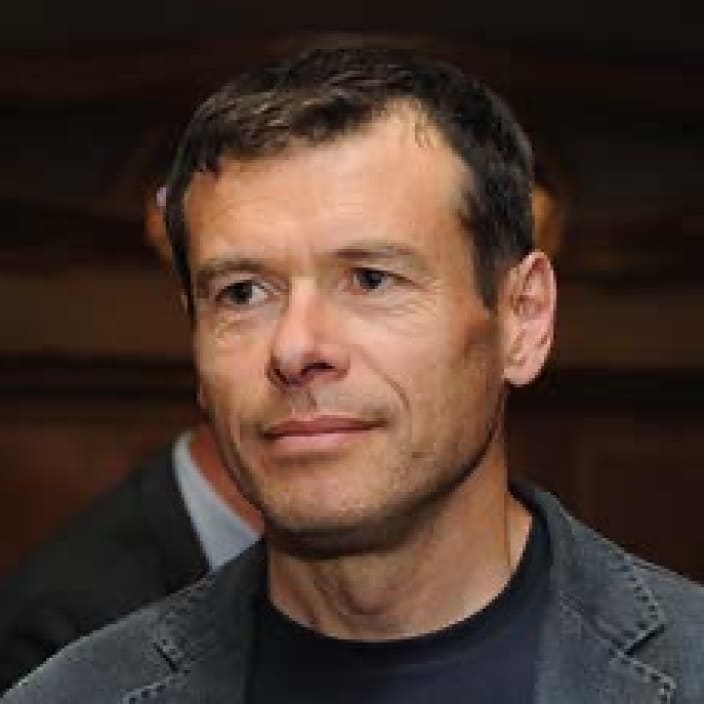
In this time of Covid-19, a leader is someone who is able to mobilize people’s intelligence and engagement. With the aim to overcome that sense of disorientation which slows down our actions and absorbs our best helpful emotional energy. Promoter of the concept of resilience, Pietro Trabucchi (Psychologist of the Italian Olympic Cross-Country Skiing Team at the 2006 Turin Games and of the National Triathlon Teams) is currently dedicated to the National Ultramarathon Teams (24h, 100 km and Ultratrail) as well as to numerous athletes of endurance sports, including rowing. The author of several books - “Resisto dunque sono”, “Perseverare è umano” and “Opus” being the best known- Trabucchi is a professor at the University of Verona.
«Resilience, a concept that has been imported into the human sciences - explains Trabucchi - is very useful to explain a series of phenomena. It actually has an engineering and metallurgical origin: in mechanical terms it is the ability of metals and alloys to withstand stress. From a psychological point of view, it is the ability to keep motivation both constant and high, in spite of problems and difficulties. Which, conversely, tend to have a demotivating effect».

Interview with Professor Pietro Trabucchi, sports psychologist and resilience expert.
«Human beings have learned to motivate themselves as a matter of evolution. But pay attention to incentives and talent management: only through progressive dosing of goals we help people’s self-esteem grow».
By nature, man is not a sprinter, he is a marathon runner. Can we apply this statement to the behaviors that must be implemented in this delicate phase of emergency management? In what context does this aptitude for endurance apply?
«Resilience is a transversal theme, present in everyday life. We identify it with precise actions, such as picking oneself up after a crisis, not giving up, accepting difficulties. I am personally involved with it in regards to sport, as resilience is one of the determining factors for athletic success and the building of great performances. But sport is simply an excellent laboratory, one that makes the playing conditions extreme: it shares a great similarity with our everyday lives, in the difficulties of a manager, an employee, an unemployed person, a student. The mechanisms with which we encounter difficulty are the same: if we have to withstand the pressure of a deadline, or face a difficult interview, or manage an economic crisis, the setting changes, but the processes used by our brain are essentially the same».
Returning to the marathon metaphor, motivation is a fundamental component in the navigation through this time of crisis. Where does an individual find the motivation to look forward with serenity? Where does a goal-oriented sportsman, manager, person draw motivation from?
«Today, we find ourselves in a context without structure, a situation without solid reference points. We need to train ourselves to live with uncertainty. In the past, motivation came from external sources: companies, political and religious institutions, family and school contexts provided reference points and horizons of certainty. Instead, today’s goals are constantly shifting and we can do nothing more than learn to motivate ourselves. Human beings have learned to motivate themselves as a matter of evolution. Before the invention of the bow and arrow, our ancestors survived for a million and a half years by hunting their prey through persistence: armed only with sticks, they chased antelopes, gazelles and deer for hours - very fast mammals but less resistant than man - until the animal collapsed from sheer exhaustion. Along with physical and biomechanical evolution, this activity changed our cerebral architecture. The motivational areas, which are linked to the prefrontal areas of the brain, have become much more developed and active. The ability to maintain an objective for a very long period of time has been built into us for millennia. This is why we will actually be capable of dealing with the crisis, when one considers the resources that we hold within us to overcome it»
In your book you explain that in today’s life and society, our innermost nature is hindered by extraneous and misleading concepts such as the myth of talent or the overestimation of the power of incentives.
«Talent must not become an alibi, an invitation to be passive: it is a predisposition, a pre-requisite. You start with talent but then you must get to work and apply yourself. In companies, I see many young people who feel privileged just for having been selected: after which, their managers complain about them for their attitude of having won destiny’s lottery... I think it is a problem stemming from the educational curriculum: many people lack the ability to resist temptation, the practice of what was once called willpower. What makes the difference is the commitment to a goal. We live in a culture that values taking shortcuts, resulting in incredible personal resources being left unexpressed and unapplied. The same thing happens with regard to incentives. I refer back to research done on people’s brains: when one’s internal system is gratified, dopamine is produced, which slows down the rhythm of the challenge. But the world is raising the bar, and often incentives are not enough to keep up with the current competitive standards. At a certain level, incentives must be more emotional than economic: a person must see beyond, cultivate an intrinsic motivation, draw from inside rather than from outside»
Working in a multinational corporation, how can you work on your self-esteem, even at critical times?
«We often don’t have a good relationship with our limitations. But when we become acquainted with them by testing ourselves, we can strengthen our self-esteem. It is a matter of realistic goals: if a marathon runner has very high expectations, when he fails, he will fall from very high. Even among talented youth there is this risk: if managers do not dose goals progressively, and instead fuel unbridled dreams (as happens in the sneaky mechanism of social networks), young people will not be able to generate antibodies against frustration. And eventually their self-esteem will collapse. Leaders must be an example, developing their own ability to make motivation last, in spite of obstacles, difficulties and problems. If the manager of a team demonstrates resilience and an attitude of perseverance, every member of the team will be propelled to work on his own personal motivation: if he can hang in there, then we can too».
You also talk about the importance of building a healthy system of relationships. What are the steps to generate a model that works?
«I will refer to my team experience with mountaineering expeditions, where the group comes together through the sharing of a challenging goal. If what we call “relationship maintenance” is lacking, everything may collapse. Some expeditions fail simply because people get into conflict. Human beings influence each other with their emotional state: the sullen or absent boss demotivates collaborators, while a present and empathetic person changes the emotional experience. In any case, I am not proposing a solution sprung from the naive vision of a boss who becomes his collaborator’s best friend. I am saying, as neuroscience teaches us, that the motivation of human mammals is influenced by relationships: and a good boss knows how to build and maintain meaningful and personal relationships with employees while safeguarding norms and roles, just as an experienced coach does with his athletes. People must be listened to and they must be taken seriously. Not for simple “do-goodism”, but because if you don’t, the team won’t be able to reach any challenging goals».
Let’s close by returning to the topic of sport. Why do professional athletes continue to be a great model to follow, even for complex organizations? What should we learn from sports dynamics?
«Some athletes are a good model: in their efforts to achieve a determined result, they are able to keep their energy up over a period of time, even in the face of physical deprivation and metabolic deficiencies. I will cite some personal cases. In following Paralympic athletes with their stories of disability and resilience, one is provided with a constant injection of confidence in mankind. Who, more than them, can be an example for being able to get back up after a trauma? And in rowing, the mindset, spirit of resilience and trust in the team has helped Italian athletes to attain world excellence, although our physical baseline is less suitable than the athletic structure of Australian or New Zealand rowers. Finally, biathlon, a discipline where speed and power (of the cross-country skiing component), combined with relaxation and precision (rifle shooting) form a very interesting cocktail in terms of resilience. Let’s take another example from Italian female athletes: in women’s biathlon, our girls are among the strongest in the world!»
Has Covid-19 changed the economic scenarios?